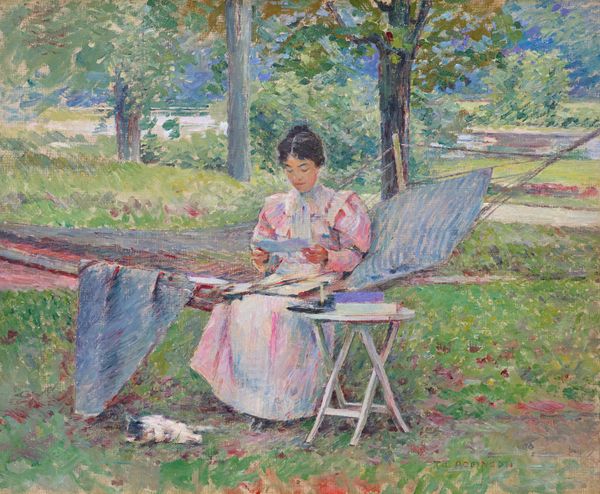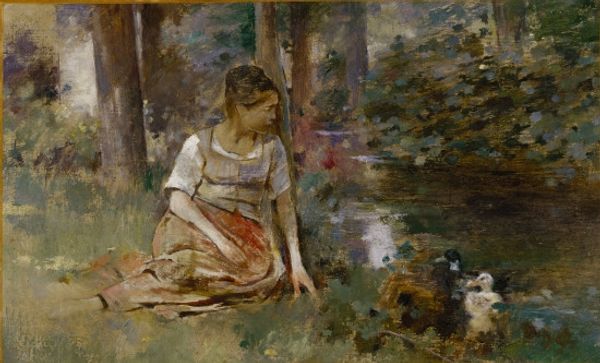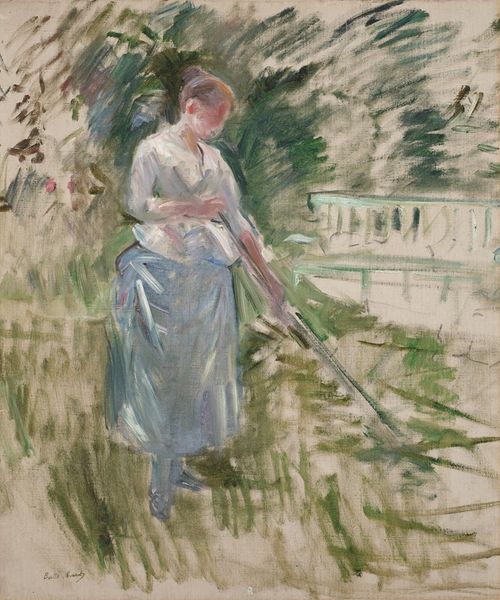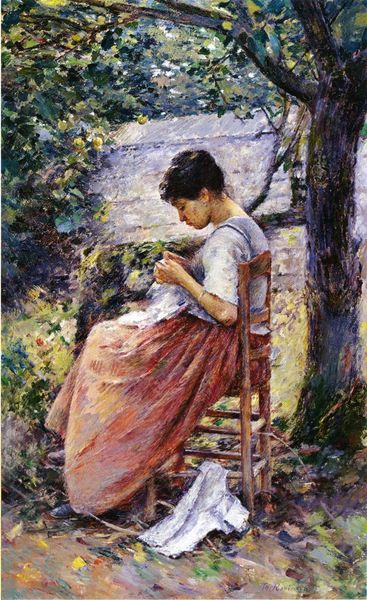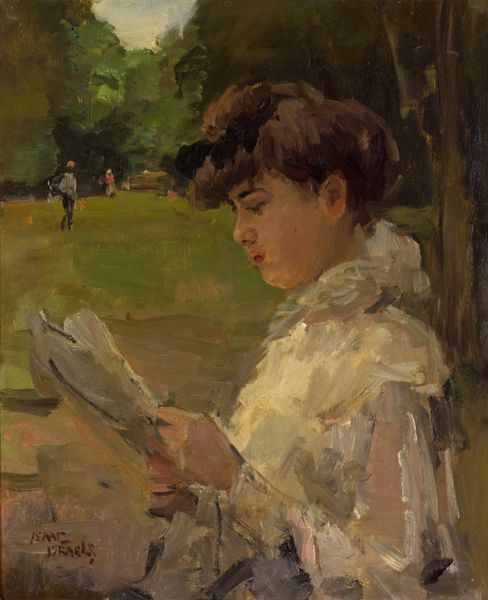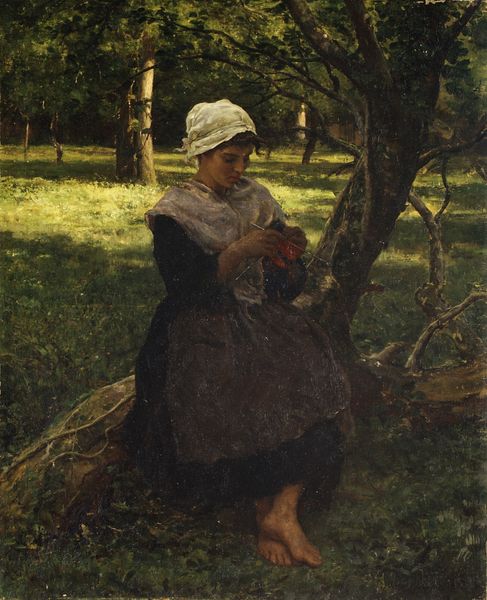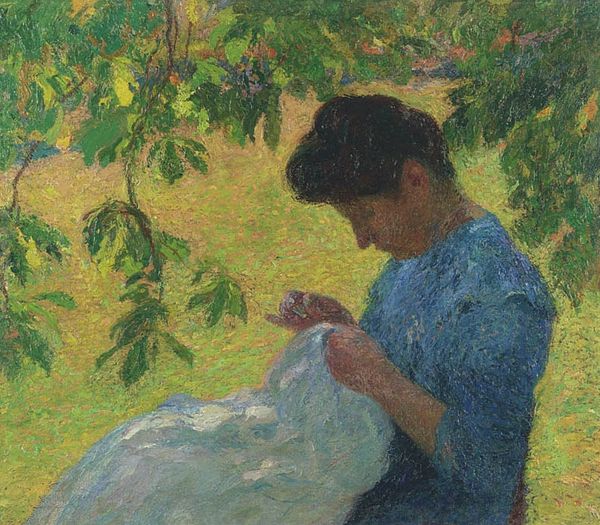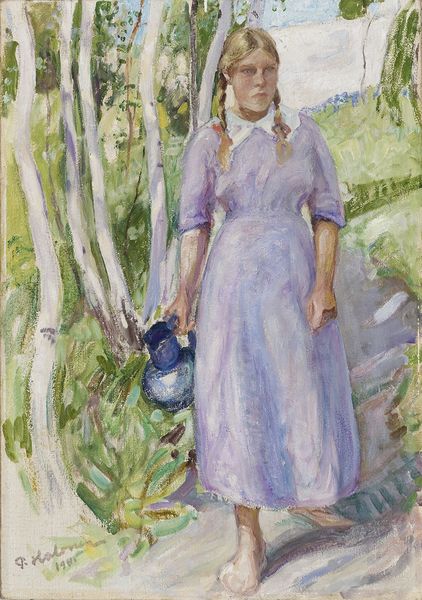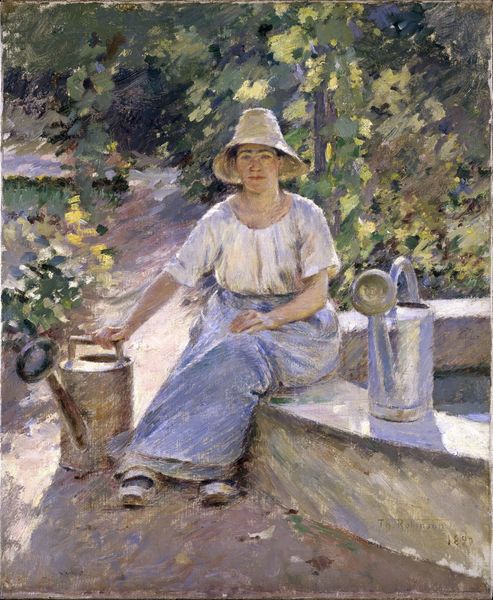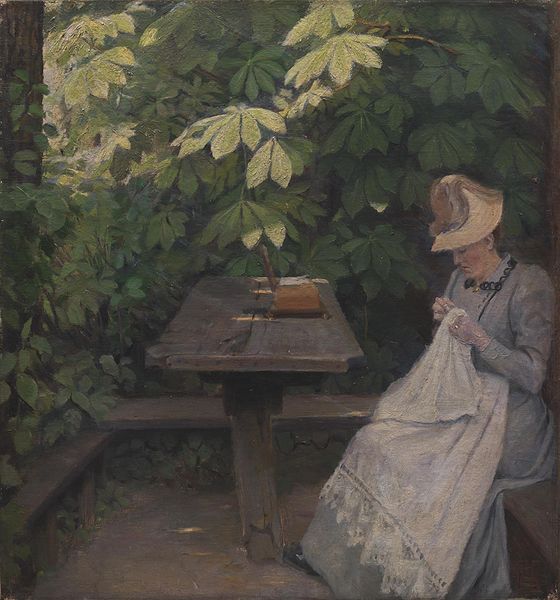
Copyright: Public domain
Editor: Here we have Theodore Robinson’s “Girl in a Hammock” from 1894, an oil painting done en plein air. It looks very serene. The brushstrokes seem quick, capturing a fleeting moment of leisure. What strikes you about this piece? Curator: Well, looking at the materials first, it’s interesting to consider the availability and cost of oil paints and canvases at the time. Plein air painting became more accessible with advancements in manufacturing and distribution, impacting artists’ ability to depict everyday life directly. Editor: So, the materials themselves shaped the subject matter? Curator: Precisely. Consider also the hammock: mass production meant even a rural setting could feature modern leisure items. The cotton or hemp used to weave it - who produced it? Under what conditions? This painting becomes a document of consumption enabled by specific economic forces. Editor: I see. So it's not just a pretty scene but a record of material culture and labor practices. Curator: Exactly. The choice of depicting a woman reading – what’s she reading? Is that a mass produced novel, furthering our consideration about publishing? The artist is not divorced from these factors. The materials and methods embed him within this socio-economic web. Does viewing it this way change your initial impression? Editor: It really does. I thought it was simply an Impressionistic snapshot of a peaceful moment. Now I'm thinking about the entire system that made that moment possible. Curator: That’s the power of considering the materiality and its wider context. It transforms a passive image into an active participant in a historical dialogue. Editor: Definitely food for thought. I will remember that from now on, thanks!
Comments
No comments
Be the first to comment and join the conversation on the ultimate creative platform.
